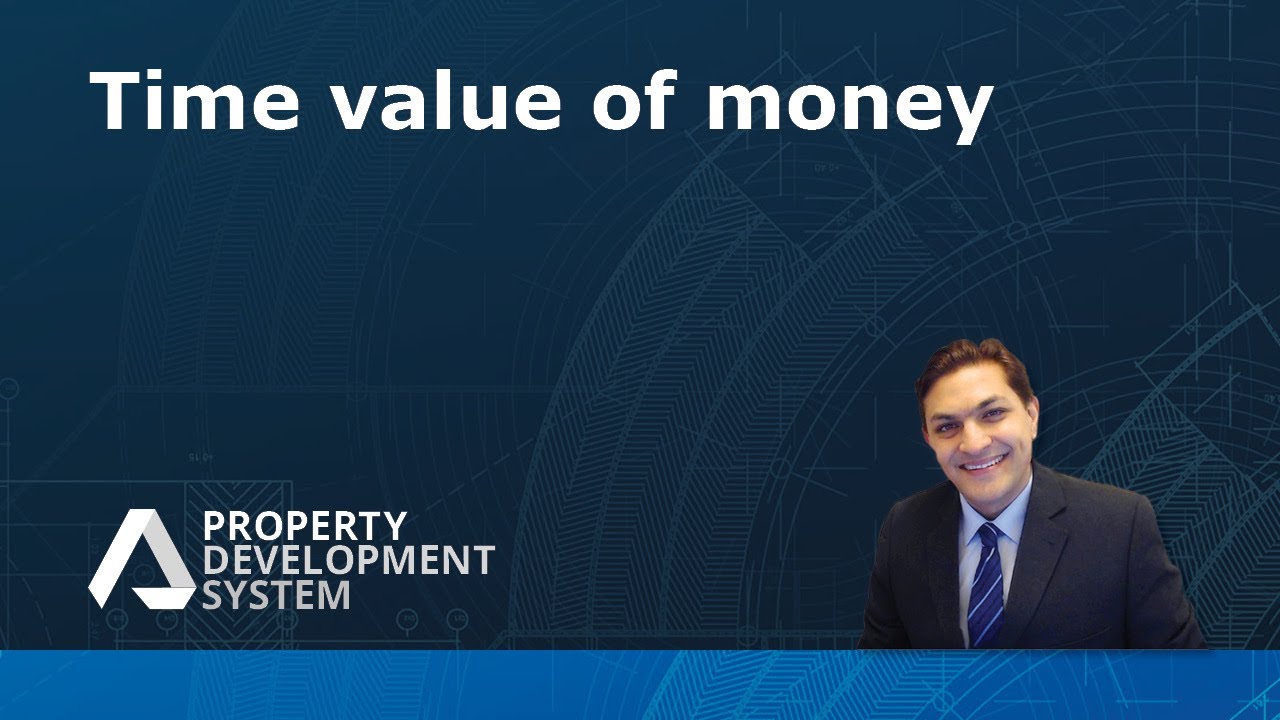Time Value of Money
Here is a comprehensive overview of the foundational concept in finance that a dollar today is worth more than a dollar in the future due to its potential earning capacity. This principle is crucial for understanding investment, savings, and financial planning.
Key Concepts Explained:
Present Value
It’s the process of determining what a future cash flow is worth in today’s dollars, emphasizing that $250,000 today is more valuable than the same amount in five years due to the potential for earning interest.
Future Value
This concept involves calculating what an amount of money today will be worth in the future, factoring in a specific interest rate over a set period.
Discount Rate
The interest rate used in the present value calculation represents the opportunity cost of money, i.e., what the money could earn elsewhere.
Practical Examples
Saving vs. Consuming
If you have $100 today, you can either consume it or save it for future consumption. By depositing it in a bank that pays 5% interest annually, you’ll have $105 in a year, demonstrating how money can grow over time.
Opportunity Cost
The video explains that the return on investment must be compared to other potential investments, using the concept of hurdle rate to determine whether the investment meets a minimum acceptable return.
Discounted Cash Flow (DCF)
A method used to estimate the value of an investment based on its expected future cash flows. It involves forecasting future cash flows, establishing a required total return (discount rate), and discounting those cash flows back to their present value.
Frequently Asked Questions
How does the concept of present value impact personal financial planning?
Present value calculations enable people to make informed decisions about saving, investing, and spending by illustrating that the money available today is worth more than the same amount in the future due to its potential earning capacity. This understanding is crucial for effective financial planning as it influences how one should approach investments, savings goals, and retirement planning.
For instance, when considering a sum of money to be received in the future, one should calculate its present value to determine how much it is worth today. This calculation can influence decisions such as whether to invest in a particular project, how much to save for future expenses, or whether it makes sense to delay consumption in favour of future financial gains. The video highlights that by comprehending the time value of money and applying the concept of present value, individuals can better assess the benefits of saving versus spending and choose investment opportunities that align with their financial goals and risk tolerance.
What role does the discount rate play in evaluating investment opportunities?
This rate represents what an investor could earn by placing their money in an alternative investment with a similar risk profile. It’s essentially the return an investor foregoes by choosing a specific investment over others.
In the context of present value calculations and discounted cash flow analysis, the discount rate is used to convert future cash flows into their present value, allowing investors to assess the attractiveness of different investment opportunities on a comparable basis. By applying the discount rate, investors can determine the present value of expected future earnings from an investment, which is crucial for making informed decisions.
The discount rate can vary depending on several factors, including the investor’s required rate of return, the cost of equity, the cost of capital, or even the interest rates charged by central banks. This variability underscores the importance of choosing an appropriate discount rate that reflects the investment’s risk and the investor’s financial objectives.
How is the discounted cash flow method used in real estate investments?
DCF analysis is portrayed as a robust tool for real estate investors to estimate the present value of expected future cash flows from a property investment. This method accounts for the time value of money, recognising that future cash flows are worth less in today’s terms due to potential earning opportunities foregone.
In real estate, the DCF method involves several key steps:
Forecasting Future Cash Flows
Investors project the cash inflows and outflows associated with the property over the investment period, including rental income, operating expenses, and capital expenditures.
Establishing the Discount Rate
This rate reflects the investment’s opportunity cost, taking into account the risk associated with the real estate market and the specific property. It’s used to discount future cash flows back to their present value.
Calculating Present Value
By applying the chosen discount rate, investors discount the projected cash flows to their present value. This process enables them to assess whether the present value of the investment’s future cash flows justifies the current investment outlay.
What is the Time Value of Money (TVM)?
The Time Value of Money (TVM) is a financial concept that states a dollar today is worth more than a dollar in the future. This is due to the potential earning capacity of money. Essentially, money available today can be invested to earn interest or returns, making it more valuable over time.
Why is the Time Value of Money important?
Understanding the Time Value of Money is crucial for effective financial planning, investment decisions, and savings strategies. It helps individuals and businesses make informed decisions about when to spend, save, or invest money based on its potential to grow in value over time.
What is Present Value?
Present Value (PV) is the current worth of a future sum of money or stream of cash flows given a specified rate of return. It reflects the principle that money received in the future is not as valuable as the same amount received today. For example, $250,000 today is more valuable than receiving the same amount in five years because of the potential to earn interest in the meantime.
How is Future Value calculated?
Future Value (FV) is the value of a current asset at a specified date in the future based on an assumed rate of growth or interest. The calculation involves multiplying the present amount by the growth rate over a set period. This concept demonstrates how money can grow over time when invested or saved at a certain interest rate.
What is a Discount Rate?
A Discount Rate is the interest rate used to calculate the Present Value of future cash flows. It represents the opportunity cost of money, indicating what the money could potentially earn if invested elsewhere. This rate helps to determine how much future cash flows are worth today.
What is Opportunity Cost in the context of TVM?
Opportunity Cost refers to the potential benefits an individual, investor, or business misses out on when choosing one alternative over another. In the context of TVM, it’s the return you could have earned by investing your money elsewhere instead of your current investment or spending choice.
What does Discounted Cash Flow (DCF) mean?
Discounted Cash Flow (DCF) is a valuation method used to estimate the value of an investment based on its expected future cash flows. This method involves forecasting the cash flows an investment will generate, determining a suitable discount rate (or required rate of return), and using this rate to calculate the present value of those future cash flows.
How does the Interest Earning Example illustrate TVM?
An investment of $100 with an annual interest rate of 5% exemplifies the TVM principle by showing how the initial amount grows over time. The increase in value from $100 to more than $100 after a year demonstrates how money can earn interest, thereby increasing its future value.
What is a Hurdle Rate, and how is it used in Investment Comparison?
A Hurdle Rate is the minimum rate of return on an investment that is acceptable to an investor or business. It’s used to evaluate potential investments by comparing the return they are expected to generate against this minimum required return. Investments that offer returns above the hurdle rate are considered, while those below it are typically rejected. This helps in making informed investment decisions by comparing the present values of different opportunities.
Test Your Knowledge
Multiple-Choice Questions on the Time Value of Money
1. What best describes the Time Value of Money (TVM)?
A) The value of money decreases over time due to inflation.
B) A dollar today is worth more than a dollar in the future due to its potential earning capacity.
C) Money has the same value regardless of when it is received.
D) The value of money is determined by the stock market.
2. The Present Value concept is used to:
A) Determine how much future investments will be worth today.
B) Calculate the future value of an investment based on today’s dollars.
C) Estimate what a future cash flow is worth in today’s dollars.
D) Assess the current inflation rate on future earnings.
3. Which of the following best exemplifies the Future Value concept?
A) Saving $100 in a piggy bank at home.
B) Calculating what $100 today will be worth in the future with a specific interest rate.
C) Comparing different banks’ interest rates for a savings account.
D) Estimating the cost of goods in future dollars.
4. The Discount Rate in the context of TVM primarily represents:
A) The rate at which the value of money decreases over time.
B) The interest rate received for savings accounts at a bank.
C) The opportunity cost of money, or what the money could earn elsewhere.
D) The Federal Reserve’s rate for lending to banks.
5. Which scenario illustrates the concept of Saving vs. Consuming?
A) Spending $100 on a shopping spree.
B) Depositing $100 in a bank account that earns 5% interest annually, resulting in $105 after one year.
C) Keeping $100 under the mattress for a year.
D) Investing $100 in a lottery ticket.
6. The Opportunity Cost in investment decisions is best described as:
A) The cost associated with taking one investment opportunity over another.
B) The total amount of money spent on an investment.
C) The loss incurred from a bad investment.
D) The price of the investment itself.
7. Discounted Cash Flow (DCF) is a method used to:
A) Calculate the total amount of cash a business will generate in the future.
B) Estimate the value of an investment based on its expected future cash flows.
C) Discount the future earnings of a company based on current market trends.
D) Understand the flow of cash in and out of a business for the next fiscal year.
8. In the Interest Earning Example, what principle does an investment of $100 with a 5% annual interest rate highlight?
A) Inflation adjustment
B) Time Value of Money
C) Risk management
D) Currency exchange rates
9. When using a hurdle rate, it is used to:
A) Determine the minimum acceptable return on an investment.
B) Calculate the maximum interest rate for a loan.
C) Establish a benchmark for inflation rates.
D) Set the standard for financial risk in investments.
Answers:
- B) A dollar today is worth more than a dollar in the future due to its potential earning capacity.
- C) Estimate what a future cash flow is worth in today’s dollars.
- B) Calculating what $100 today will be worth in the future with a specific interest rate.
- C) The opportunity cost of money, or what the money could earn elsewhere.
- B) Depositing $100 in a bank account that earns 5% interest annually, resulting in $105 after one year.
- A) The cost associated with taking one investment opportunity over another.
- B) Estimate the value of an investment based on its expected future cash flows.
- B) Time Value of Money
- A) Determine the minimum acceptable return on an investment.
Assignment
Time Value of Money: Practical Exercise
Objective:
This assignment is designed to enhance your understanding of the Time Value of Money (TVM), a fundamental concept in finance that illustrates the potential earning capacity of money. By engaging in these exercises, you will apply the principles of Present Value, Future Value, Discount Rate, and their applications in real-world financial decisions such as saving, investing, and evaluating opportunity costs.
Instructions:
Complete the following questions, To Do’s, and research questions. Show all your work for calculations, and provide thoughtful, concise responses to conceptual questions.
Part 1: Understanding Concepts
- Question: Explain in your own words why a dollar today is worth more than a dollar in the future.
- To Do: Calculate the future value of $1,000 invested today at an annual interest rate of 5% for 5 years.
- Question: Describe the concept of Discount Rate and its significance in financial planning and investment decisions.
- To Do: Calculate the present value of $1,000 to be received in 5 years, assuming a discount rate of 5%.
- Research Question: Find an article or paper on how the Time Value of Money impacts retirement planning. Summarize the key points made by the author(s).
Part 2: Practical Application
Scenario Analysis: Suppose you have the option to receive $10,000 today or $12,000 in 4 years. Assume the annual discount rate is 4%.
- a. Calculate the present value of $12,000 received in 4 years.
- b. Based on the calculation, decide whether you would prefer to receive the money today or in 4 years and explain why.
- To Do: Create a simple Excel or Google Sheets model to calculate the future value of a series of monthly savings of $200 at an annual interest rate of 3%, compounded monthly, for 10 years.
- Question: Discuss the concept of Opportunity Cost and its role in evaluating different investment options.
- Research and Reflect: Investigate a real-world example of a discounted cash flow (DCF) analysis used in a business or investment decision. Detail the steps taken in the analysis and the outcome.
Part 3: Deep Dive
- To Do: Develop a hypothetical investment scenario where you have to choose between two investment options with different interest rates and time horizons. Use the concepts of present value and future value to make an informed decision.
- Research Question: Explore how inflation impacts the Time Value of Money. Provide an example to illustrate your points.
- Reflection: Considering the principles of TVM, reflect on how understanding these concepts influences personal financial decisions, such as loans, mortgages, and saving for retirement.
Submission Guidelines:
- Complete all parts of the assignment in a word processor or PDF document.
- Include any Excel or Google Sheets files used for calculations.
- Cite all sources used for research questions according to your educational institution’s guidelines.
- Submit your assignment via mail or comments.



